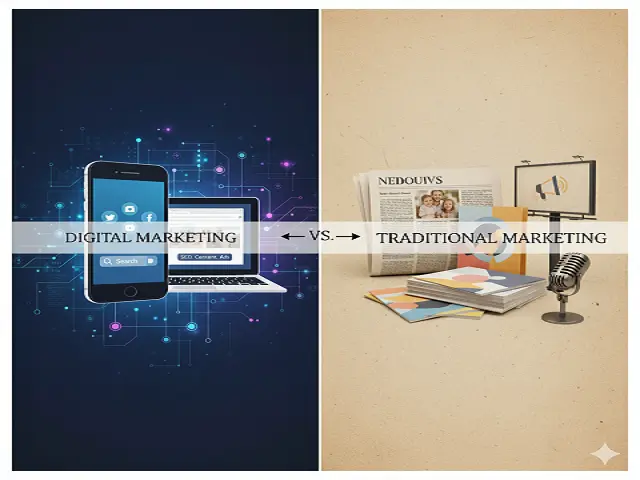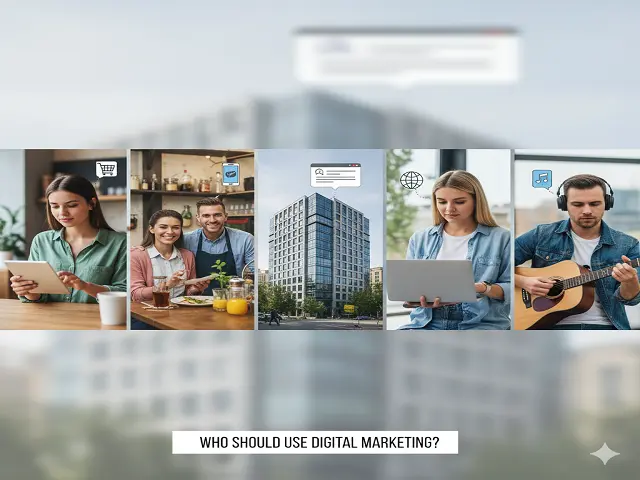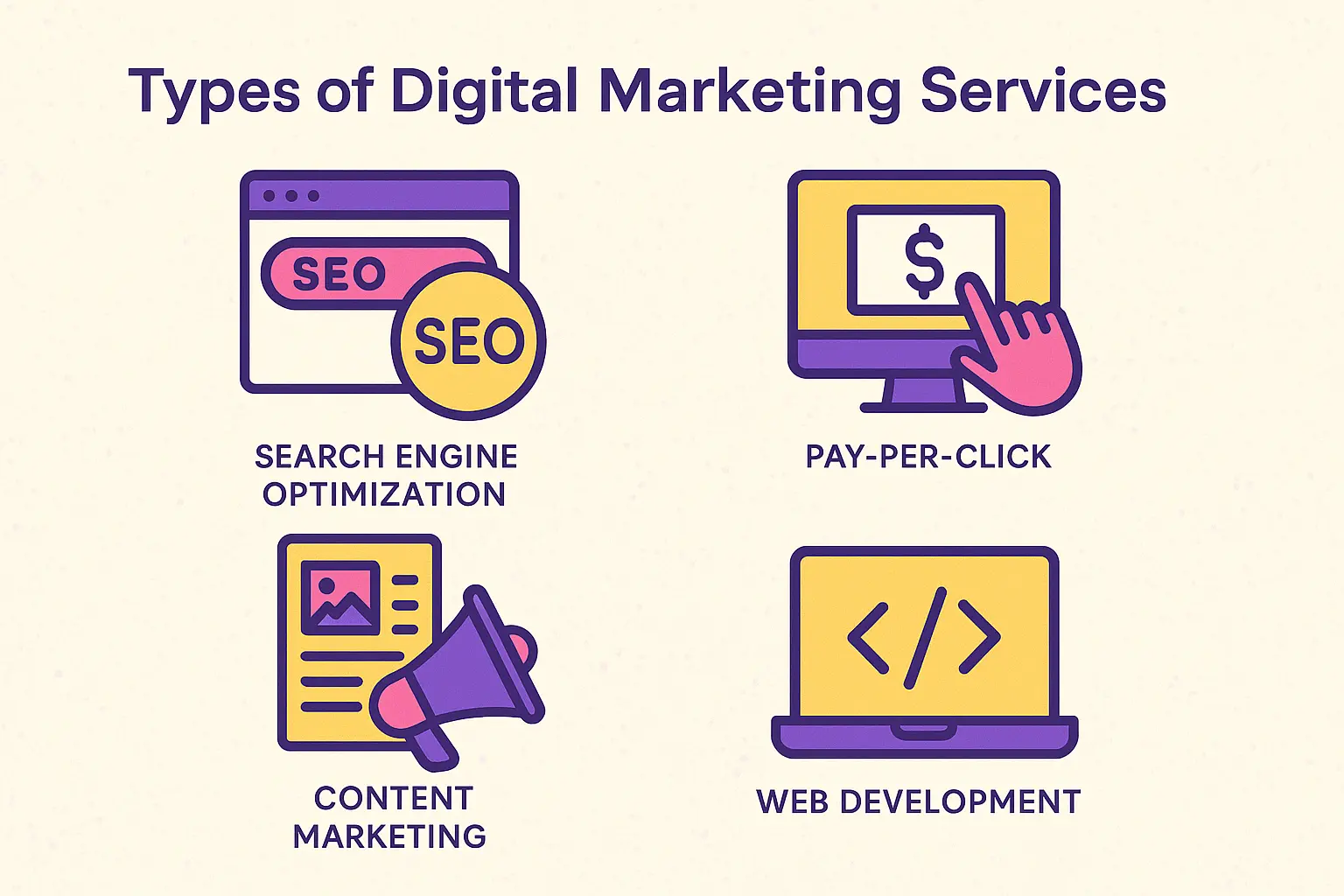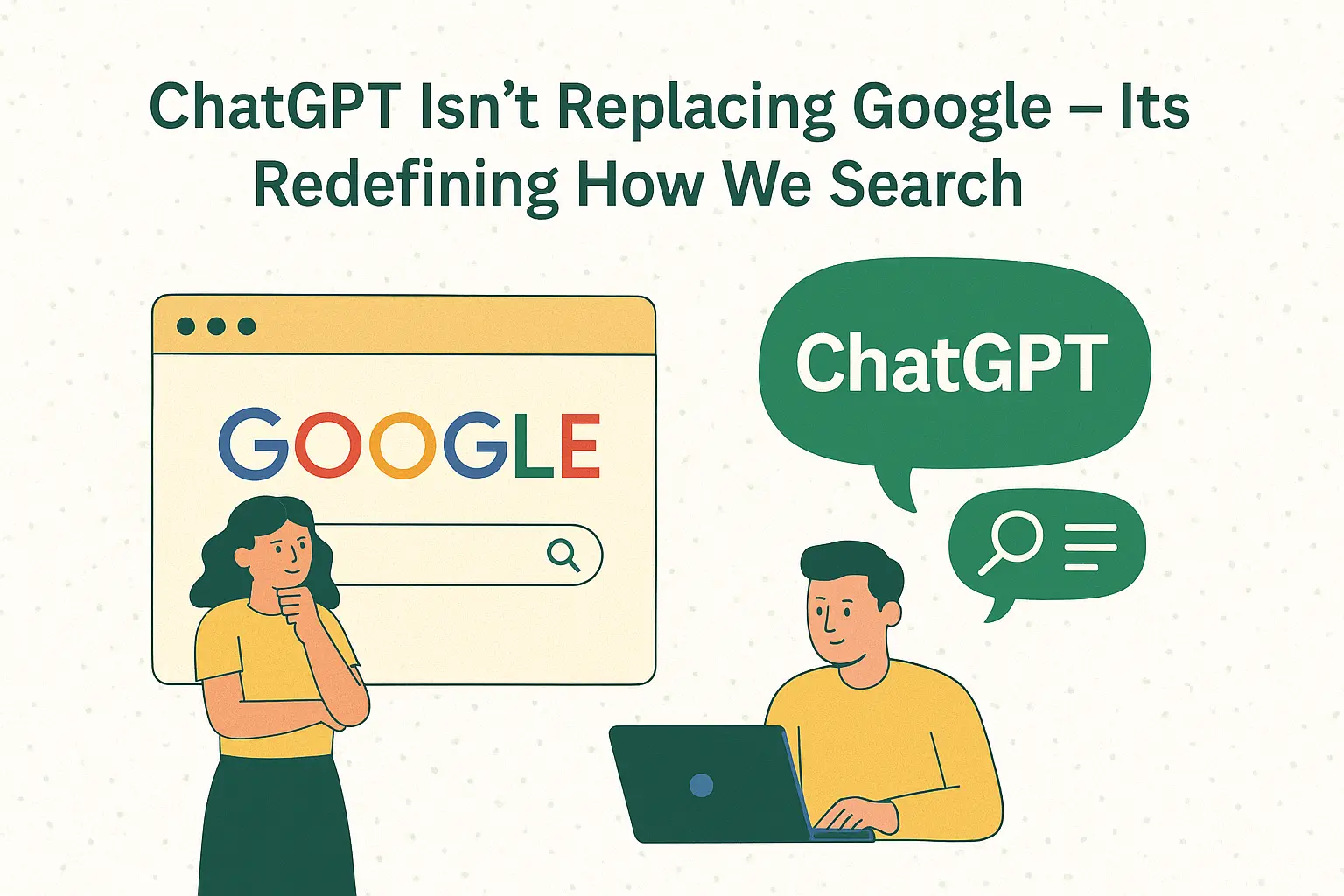Digital marketing vs traditional marketing: This guide explains the differences, benefits, and why digital strategies redefine growth.
Marketing has always been about connecting with customers, creating awareness, generating interest, and building trust. But the way businesses reach audiences has changed dramatically in the last two decades.
On one hand, traditional marketing continues to use tried-and-tested mediums like print, radio, TV, and billboards. Conversely, digital marketing uses online platforms, search engines, social media, and email to engage consumers immediately.
The question many businesses ask is: Which is better? To answer this, let’s explore the difference between digital marketing and traditional marketing, their advantages, and how each impacts business growth.
What Is Traditional Marketing?
Traditional marketing refers to offline promotional methods that have been around for decades. These include:
- Print media: newspapers, magazines, brochures
- Broadcast media: television and radio advertisements
- Outdoor marketing: billboards, posters, transit ads
- Direct mail: flyers, catalogues, postcards
- Face-to-face events: trade shows, conferences, seminars
Strength of traditional marketing:
- Wide reach, especially among older demographics
- Tangible materials like brochures build credibility
- Effective for local audiences
Traditional campaigns often need a lot of money, and it’s hard to measure their return on investment (ROI).
What Is Digital Marketing?
Digital marketing uses online platforms and technologies to promote products or services. Popular channels include:
- Search Engine Optimisation (SEO)
- Social Media Marketing
- Pay-Per-Click Advertising (PPC)
- Content Marketing (blogs, videos, infographics)
- Email Marketing
- Influencer Marketing
Strength of digital marketing:
- Real-time results and tracking
- Cost-effective compared to large-scale traditional campaigns
- Personalisation based on customer data and behaviour
- Interactive engagement with audiences
For businesses today, the benefits of digital marketing for businesses go far beyond cost savings; they enable measurable growth, global reach, and higher engagement.
Key Differences Between Digital Marketing and Traditional Marketing
Understanding the difference between digital marketing and traditional marketing comes down to several factors:
| Aspect | Traditional Marketing | Digital Marketing |
| Medium | Print, broadcast, outdoor, direct mail | Online platforms, social media, search engines |
| Reach | Local or regional, mass audience | Global, targeted, niche audience |
| Cost | High (TV, print ads, billboards) | Flexible (low-cost to premium campaigns) |
| Tracking & Analytics | Difficult to measure ROI accurately | Real-time data, detailed metrics |
| Engagement | One-way communication | Two-way interactive communication |
| Personalisation | Limited | Highly personalised with data-driven strategies |
| Turnaround Time | Longer to design, print, and distribute | Faster, campaigns can go live instantly |
| Longevity | Tangible (newspapers, flyers last for days/weeks) | Content can be evergreen but requires updates |
Advantages of Traditional Marketing
Although digital strategies are expanding rapidly, traditional marketing remains valuable:
- Tangible Impact: Physical ads like brochures or magazines creates a lasting impression.
- Brand Familiarity: Older demographics are more comfortable with TV, radio, and print.
- Mass Appeal: Ideal for reaching large audiences simultaneously.
- Trust Factor: Established mediums (TV, newspaper) often carry more credibility.
Traditional methods are particularly effective for businesses focusing on local communities or audiences that are less engaged online.
Advantages of Digital Marketing
The benefits of digital marketing for businesses are what make it a must-have in today’s landscape:
- Cost-Effective: A small business can advertise on social media or Google Ads at a fraction of TV or print costs.
- Global Reach: With a single campaign, brands can reach audiences worldwide.
- Targeted Marketing: Businesses have the ability to target users based on age, gender, location, interests, and behavior.
- Interactive Engagement: Likes, shares, comments, and direct messages allow real-time interaction with customers.
- Measurable ROI: Tools like Google Analytics and social media insights show exactly what’s working.
- Flexibility: Campaigns can be modified immediately according to their performance.
Content Variety: From blogs and videos to podcasts and reels, businesses can experiment with formats to engage different audiences.
Digital Marketing vs Traditional Marketing: What’s Right for Your Business?
- Traditional marketing works best for building mass awareness, especially at the local or regional level.
- Digital marketing excels in creating personalised, measurable campaigns that drive conversions.
For example:
- A real estate company may use billboards for visibility while running Facebook ads for targeted lead generation.
- A retail brand might use newspaper ads for festive promotions but rely on SEO and email campaigns for ongoing sales.
Why Digital Marketing Is Leading Today
While traditional strategies remain valuable, digital methods are often the smarter choice for modern businesses:
- Consumers are online: More than 5 billion people worldwide use the internet.
- Mobile-first behaviour: Most consumers research products on their phones before buying.
- Evolving algorithms: Platforms like Google and Instagram are optimised for targeted business advertising.
- Changing demographics: Younger generations, such as millennials and Gen Z, devote more time to online activities than to watching TV or reading print media.
The benefits of digital marketing for businesses, including affordability, measurability, and precision, make it indispensable for growth.
Case Study: Traditional vs Digital Campaign Impact
Imagine a clothing boutique launching a new festive collection:
- Traditional Campaign: They run a newspaper ad costing ₹50,000. Although it reaches thousands, they cannot track the number of readers who visit the store or make a purchase.
- Digital Campaign: They invest the same amount into Facebook and Google Ads, targeting women aged 18–35 in specific cities. Within a week, they track clicks, leads, and conversions, directly measuring ROI.
This simple comparison shows why digital marketing vs traditional marketing is a conversation every business needs to have.
The Future of Marketing: Digital-First, but Not Digital-Only
As technology evolves, the marketing landscape will continue shifting. While traditional advertising may never completely disappear, digital strategies are set to dominate because of their adaptability and data-driven power.
Yet, the smartest brands will find balance using traditional methods to establish trust and presence while leveraging digital tools for measurable, scalable growth.
The debate between digital marketing services and traditional marketing services focuses less on which is better and more on which approach best fits your audience and goals. Traditional methods still hold importance for credibility and local reach, but the difference between digital marketing and traditional marketing is clear: digital is faster, more cost-effective, measurable, and global. At Savit Interactive, we assist businesses in leveraging digital marketing by developing customized strategies that deliver measurable growth. Our team helps your brand stay competitive in a digital-first world by covering SEO, PPC, social media, and content marketing.



